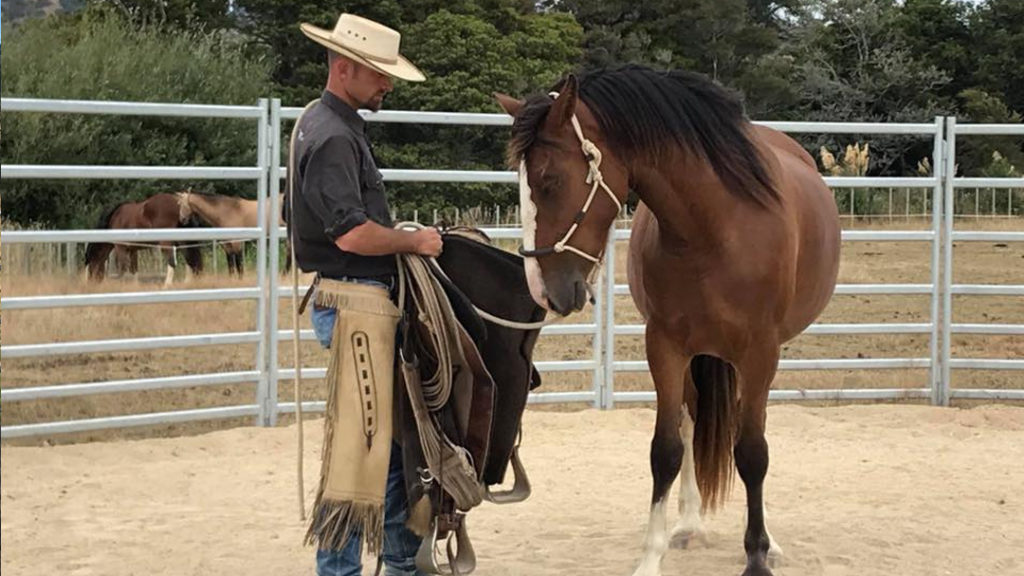Desensitization, or “sacking out”, is an important part of training and building confidence (even a horse that’s not spooky can benefit from desensitization). It doesn’t matter what object that he’s scared of; your goal is to build his trust and confidence in you as the leader, regardless of the object or situation. You’ll never be able to introduce a horse to every possible frightening scenario, so the purpose is that he learns to maintain confidence in your leadership despite “scary” situations you may encounter.
Here are a few basic steps:
- Remember the actual object does not matter, you are teaching your horse a principal of bringing his mind back to you when troubled. Desensitization is not about making your horse comfortable with a plastic bag, a tarpaulin, a flag, a pool noodle or any other man made object. The aim is your horse responding to you in spite of trouble!
- Keep the concepts of approach and retreat in mind when you introduce the object to your horse (a plastic bag for example). Let him look at and smell it. If he’s bothered by it, then you know he’s feeling pressure from it being close. Stay in a safe position near his shoulder. Remove the pressure. Always pet and reassure him.
- Let him smell and look again. If he seems more confident about it, try touching his shoulder with the bag. If his feet move, just stay with him and keep your energy low. If he quits you completely, stop him and try to get back into the same position quickly but without scaring him. As his feet stop, remove the bag (pressure) to let him rest. Timing the release with his feet coming to a stop, will indicate to him that standing and handling the pressure is what you’re looking for. Remember, you want to build confidence, not destroy it. Too much pressure without proper timing of the release will just confirm his fear of the bag.
- Keep your body language quiet to avoid giving him cues to move his feet. If your communication is unclear, you could end up with a horse that is completely desensitized to all stimuli and cues. If he won’t stop moving his feet and doesn’t seem to be trying to deal with the pressure, put him to work a little while (making the moving of the feet your idea and the taking the opportunity to relax and deal with the bag his idea). The more you engage his mind in choosing to cooperate with you, the more successful your session will be.
- Continue working back from his shoulder until you can touch him all over and with increasing noisiness. If he’s ticklish around his feet, tie the bag onto a stick or something that will extend your reach without putting you in danger.
Take the time it takes and recognize the “try” (the smallest effort to understand). Removing the pressure is the most significant reward you can use to indicate when he’s done the right thing. As your horse gains confidence to keep his feet still in spite of the noise of the bag, he’s learning to trust you with his feet – basically with his life. This is just one way to help build a strong, working relationship that is based on understanding, trust and respect.


